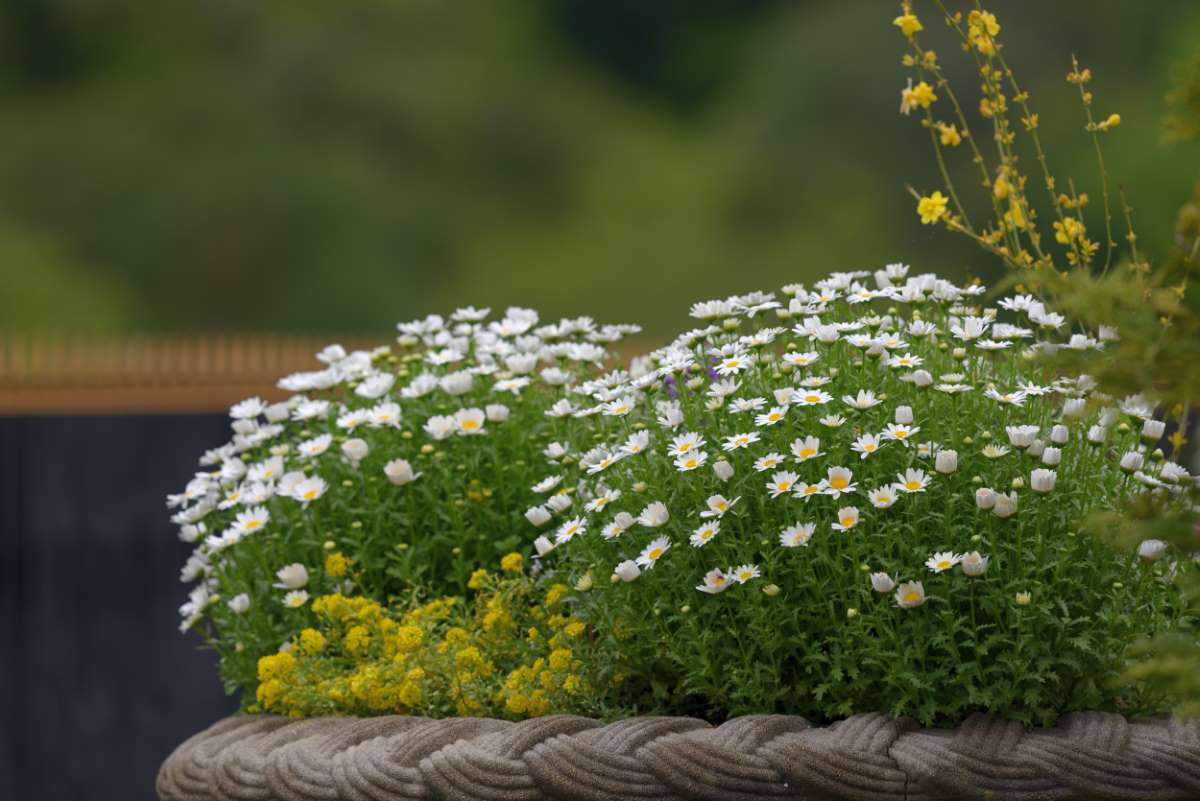Description
Leucanthemum –
There are 26 species of vigorous, clump forming annual and perennials in this genus. They occur in rocky alpine slopes and moist meadows, grassland, and wasteland in Europe and temperate Asia. They have alternate, smooth edged, deeply pinnatifid, toothed, scalloped, or lobed leaflets, and solitary daisy-like terminal flowers, which are usually white, sometime yellow with yellow centers. Grow alpine species in a scree bed or rock garden, taller perennials in a wild garden. Some hybrids and cultivars are useful in a herbaceous border and for cut flowers.
Grow these undemanding plants in moderately fertile, moist but well drained soil in full sun or partial shade. Alpine species need sharply drained soil in full sun. Many of the taller plants need support. Divide perennials in early spring or late summer.
Prone to aphids, slugs, earwigs, chrysanthemum nematode, and leaf spots.
L. paludosum – Chrysanthemum plaudosum – Melampodium paludosum – This hairless, bushy annual from Southern Europe grows 2-6″ tall and 8″ wide. It produces obovate, spoon shaped, gray green basal leaves, to 5″ long, and shorter, oblong-wedge-shaped stem leaves, all leaves are toothed to pinnatifid. In summer it bears solitary flowers to 1 1/4″ across, with yellow or yellowish white petals and deeper yellow centers
Zones 6-9




